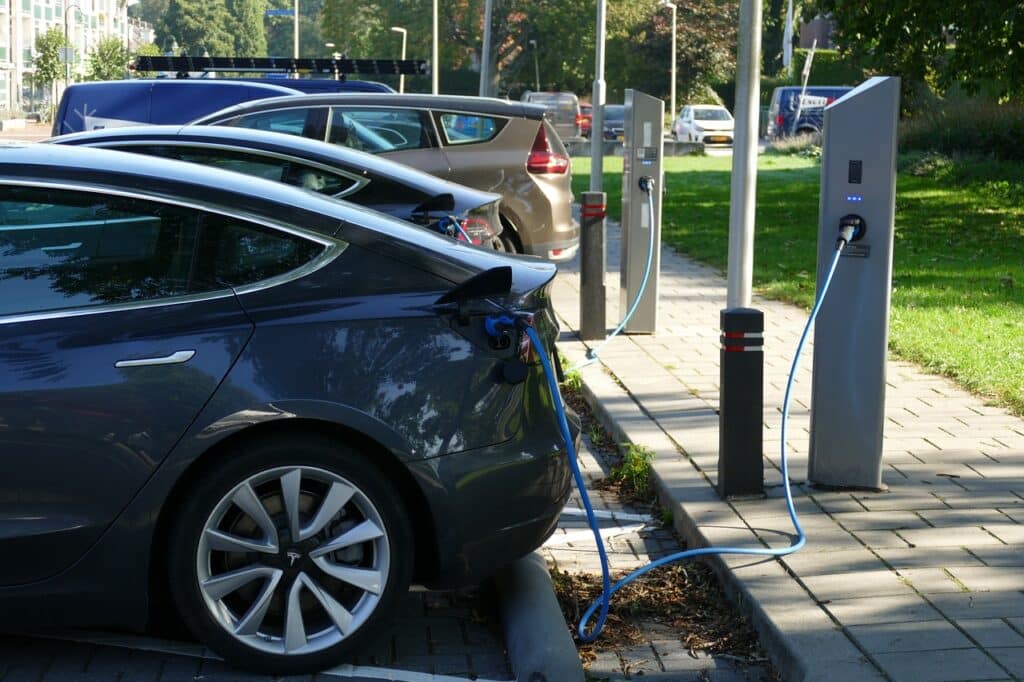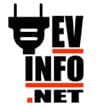ChargeX Consortium, Funded by Joint Office, Addresses EV Charging Challenges
In an ambitious stride toward resolving key electric vehicle (EV) charging challenges, the Joint Office of Energy and Transportation (Joint Office) has initiated funding for the formation of the National Charging Experience Consortium (ChargeX Consortium). This groundbreaking consortium brings together the collective expertise of three premier national laboratories: Argonne National Laboratory, Idaho National Laboratory, and the National Renewable Energy Laboratory. Their collaboration is set to spearhead innovations that address pivotal EV charging concerns, which are slowing EV adoption.

ChargeX Consortium Addresses Important EV Charging Standardization Issues, With Goal of Results by June 2025
The ChargeX consortium seeks to deliver meaningful results by June 2025. The ChargeX Consortium will address three key issues which have plagued EV charging from the beginning:
1. Payment processing and user interface
2. Vehicle-charger communication
3. Diagnostic data sharing.
These concerns include enhancing the payment processing and user interface to ensure that they are both user-friendly and secure, improving vehicle-charger communication to enable a more efficient charging process, and facilitating diagnostic data sharing through standardization to improve charger reliability and service. By uniting these national laboratories with a diverse array of organizations from across the EV industry, the ChargeX Consortium aims to provide tangible solutions that will significantly improve the EV charging experience for users nationwide, marking a critical step forward in the U.S.’s transition to more sustainable transportation.
“We need to work as quickly as possible to avoid precluding people from adopting EVs,” said John G. Smart, director of ChargeX.
EV Charging Payments Are a Huge Problem
Payments represent a significant hurdle in the ecosystem of electric vehicle (EV) charging, shedding light on the broader challenges of accessibility and user-friendliness at public charging stations. The current reliance on exclusive apps for transaction processing not only complicates the payment process but also fragments the user experience, compelling EV drivers to juggle multiple apps.
EVinfo.net Suggests One Universal EV Charging App
In November 2023, EVinfo.net reported on the many problems with payments for EV charging. At the time, we suggested one universal EV charging app as a solution for drivers needing to download and use multiple EV charging apps. Many drivers have reported having to download over a dozen EV charging apps, causing great confusion and significant inefficiency. Another problem we reported on was that not all stations have credit card readers. All of these problems are slowing down EV adoption, as drivers considering going electric see the myriad of payments and other problems associated with EV charging and view the problems as too insurmountable to consider EV adoption.
EV expert Bill Ferro, Founder of EVSession, said: “I have over a dozen apps on my phone for EV charging, station rating, trip planning, vehicle control, and even one for my home charging unit. It’s really an untenable situation. The solutions are one universal EV app and credit card readers on every station.”
To address charging payment problems, ChargeX is exploring the integration of Plug-and-Charge systems, an innovative payment solution that promises to revolutionize the EV charging experience. These systems automatically recognize a vehicle upon connection and seamlessly deduct the correct payment from a pre-associated account, eliminating the need for manual transactions. However, recognizing the diversity in user preferences, ChargeX acknowledges that some EV customers may opt for more traditional payment methods. To cater to this segment, ChargeX is diligently working with credit card device manufacturers to resolve existing communication issues that hinder the process of simply swiping a credit card to initiate charging. This dual approach ensures that every EV driver, regardless of their payment preference, can enjoy a smooth and hassle-free charging experience.
Removing the Need to Disconnect and Reconnect to Reset Charging
It is a source of frustration for users when a charging session cannot be initiated, often necessitating the physical disconnection and reconnection of the charging cable to reset the system. In response, ChargeX advocates for an innovative solution where charging stations are equipped to attempt to re-establish a connection automatically without needing physical intervention from the user. By investigating and addressing the intricacies of payment challenges, ChargeX is committed to developing comprehensive best practices that facilitate a smoother, more efficient payment process across a variety of platforms. This initiative is poised to make a substantial impact on improving the public EV charging infrastructure, making EV charging more accessible, reliable, and user-friendly.
Error Codes Need Standardization
Another challenge currently facing the electric vehicle (EV) charging industry stems from the discrepancy between automakers and charging network operators regarding error codes. This disparity renders it difficult to effectively aggregate and analyze these codes to pinpoint the exact nature of problems encountered during the charging process. ChargeX is taking a proactive step to address this issue by advocating for the establishment of a common set of error codes. This approach mirrors the universally recognized On-Board Diagnostic II (OBD-II) systems, which have standardized diagnostic trouble codes (DTCs) across the automotive industry, enabling mechanics to quickly diagnose and fix vehicle problems.
ChargeX recognizes that the integration of chargers with back-office networks, predominantly through the Open Charge Point Protocol (OCPP), allows network operation centers to access these error codes. However, automakers draw upon a separate data stream, creating a complicated scenario in identifying the root cause of charging issues. The current method of troubleshooting, which often involves cross-team communication between automotive and charging experts, is cumbersome and ineffective.
To surpass these challenges, ChargeX is not only leading the charge in establishing common error codes but is also pushing for a more comprehensive data exchange. This encompasses sharing contextual information vital for discerning patterns and root causes, such as the make and model of both the EV and the charging station involved. By enabling a richer information exchange that goes beyond mere error codes, ChargeX aims to streamline the troubleshooting process, enhancing the EV charging experience for users and contributing to the overall reliability and efficiency of the charging infrastructure.
Testing is Challenging, With So Many Different EVs and EV Chargers
A challenge on the horizon is the need to test EVs with charging stations. Initially, when the market was less saturated with EVs and charging station manufacturers, it was feasible for automakers to ensure compatibility by physically connecting each new EV model to every available charger. However, as the industry grows, and with the diversity and number of vehicles and chargers, this method is swiftly becoming impractical. The current state of practice, which involves physically testing every vehicle with every charger, one by one, is inherently limited in scalability. Given the burgeoning number of vehicles and chargers on the market, this approach is unsustainable.
ChargeX has identified this scalability issue and has proactively established a testing methods task force. This task force is dedicated to developing innovative ways to conduct simulated testing that accurately represents both the cars and the chargers, thereby circumventing the need for physical testing of every combination. ChargeX’s commitment to enhancing the EV charging experience goes beyond addressing compatibility issues—it aims to introduce new approaches or streamline existing ones to make the testing process more scalable.
Collaboration is Key
By bridging the gap between research and real-world application, the ChargeX Consortium, including the Argonne National Laboratory, Idaho National Laboratory, and the National Renewable Energy Laboratory, plays a pivotal role in streamlining the EV charging infrastructure. Their work aligns seamlessly with the overarching mission of the Joint Office of Energy and Transportation to nurture an electrified transportation ecosystem that embodies affordability, convenience, equity, reliability, and safety. Furthermore, this concerted effort at data sharing and problem-solving directly contributes to the strategic planning and coordination necessary for the expansion of a nationwide EV charging network, a critical component of the U.S.’s green transportation future.
Building upon the foundational efforts towards charging reliability set by the minimum standards for Federal Highway Administration Title 23-funded EV charging infrastructure projects; the ChargeX Consortium additionally complements two pivotal initiatives supported by the Joint Office. The first initiative, the Joint Office’s Ride and Drive Electric Funding Opportunity Announcement is dedicated to enhancing EV charging performance and reliability. This initiative focuses on increasing commercial capacity for the testing and certification of high-power EV chargers and validating their real-world performance and reliability. The second initiative involves the creation of a centralized data platform for EV charger data reporting. This platform is designed to facilitate and maximize access to crucial data and insights, thereby empowering a more informed analysis of charging reliability in the future. Together, these efforts synergize with the ChargeX Consortium’s mission, streamlining advancements in EV charging infrastructure to ensure a more reliable, efficient, and user-friendly charging experience for electric vehicle users across the nation.
Over the next two years, the collaboration between national labs and industry leaders will be pivotal in reshaping the public EV charging landscape in the United States. With a robust goal of ensuring that public charging stations achieve a successful charge “the first time, every time,” this initiative aims to significantly elevate the customer charging experience. While this target is ambitious and non-enforceable, it aligns closely with federal uptime requirements, emphasizing a seamless and reliable charging process for all users. To enhance this effort, the national labs will engage with consumer advocacy groups to refine methods for evaluating the customer charging experience and to gather essential feedback.
This customer-centric approach is anticipated to drive industry-wide enhancements by tracking and responding to user experiences over time. Furthermore, these collaborative efforts will culminate in the creation of a blueprint for a voluntary recognition program for charging station operators who consistently deliver superior charging experiences. In addition to focusing on the user experience, the national labs are set to develop cutting-edge testing solutions for EV and charger software compatibility before these technologies hit the market. This aims to ensure interoperability between every EV and charger, fostering a more streamlined and efficient charging ecosystem. Ultimately, this strategic initiative not only aims to elevate the quality of the nation’s public charging infrastructure but also to protect and maximize both public and private investments in this rapidly growing sector.
The Joint Office is Making Incredible Progress For the American EV Revolution

EVinfo.net commends the Joint Office for its important and highly impactful support of the American EV revolution. The establishment of the Joint Office of Energy and Transportation marks a significant milestone in the United States’ commitment to a sustainable and efficient future in both energy and transportation sectors. Formed through the Bipartisan Infrastructure Law (BIL), this collaborative entity bridges the U.S. Department of Energy and the U.S. Department of Transportation, ensuring an integrated approach to achieving shared goals. The primary focus of the Joint Office is to streamline efforts toward building a comprehensive network of electric vehicle chargers and the infrastructure for zero-emission fueling options.
Additionally, the office is tasked with promoting the adoption of zero-emission transit and school buses, aiming to significantly reduce the environmental impact of the nation’s transportation systems. By aligning resources and expertise from both departments, the Joint Office is poised to play a pivotal role in the realization of the BIL’s objectives, setting a precedent for collaborative governance in the realm of energy and transportation. The evolutionary nature of the Joint Office’s scope suggests an adaptable and forward-thinking approach, ready to address the dynamic challenges of modern infrastructure development.
For more information or to join the ChargeX Consortium, visit chargex.inl.gov.
